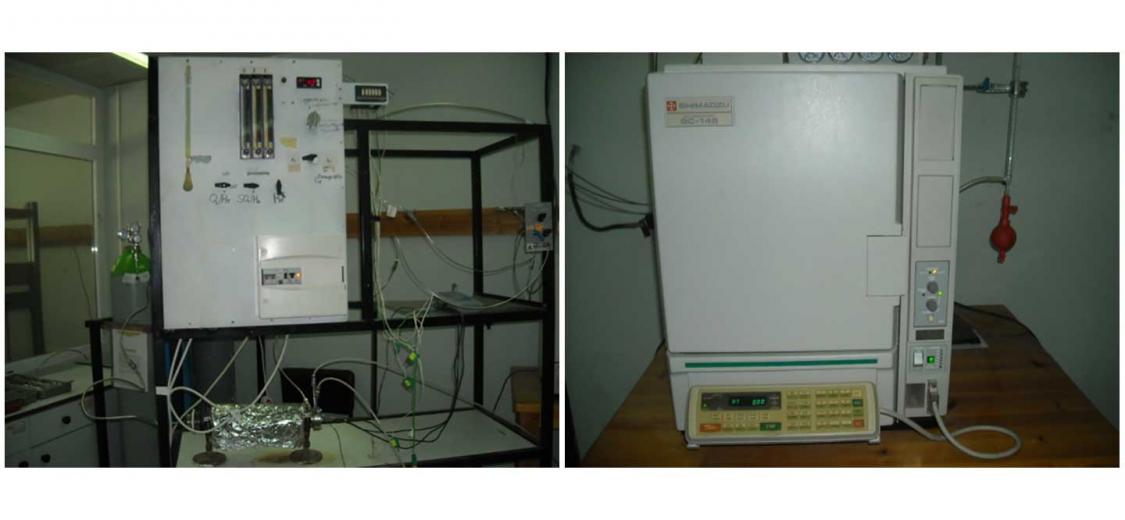STAFF
| Spartinos Dimitris, Lecturer, Department of Chemical Engineering, University of Patras | 6974057732 | dspart@chemeng.upatras.gr |
| Nikolaou Basiliki, secretary of the Laboratory | 2610997820 | nikolaoubasilike@gmail.com |
| PostGraduate and Undergraduate students who elaborate Diploma Thesis | ||
DESCRIPTION
Non-catalytic Gas-Solid Reactions for Air Pollution Control
SO2 Emissions: The use of calcium-based sorbents to reduce SO2 emissions from coal-fired power plants has attracted worldwide attention during the last 35 years. Lime or limestone are usually used in fluidized bed or pulverized coal combustors. However, in areas where introduction of the fluidized bed technology appears unlikely in the foreseeable future and where injection of limestone in the existing pulverized lignite combustors is impossible due to the very low heating value of the lignite used, a dry or wet process could provide the means for reducing SO2 emissions of pulverized lignite power plants.
We are currently studying the removal of SO2 from stack gases of pulverized lignite combustors using dry and wet processes in limestone/lime and lignite reactors. The study includes experiments in lab-scale reactors, mathematical modeling, numerical simulation, parametric analysis and optimization at laboratory and industrial conditions.
Impact of sulphates on durability of concrete structures
Concrete is the most common building material of our days. Despite the significant advances made in recent years in concrete technology, the problems of inadequate durability persist in a dramatic increase. The concrete deterioration over time is the result of various mechanical, physical, chemical or biological processes. The chemical processes that cause concrete deterioration can be distinguished in two categories, those affecting the concrete and those affecting the steel reinforcement of the concrete. In the first subclass there is the chemical effect of harmful substances (molecules or ions) on the concrete. A necessary condition for chemical reactions to occur in the concrete is the presence of water. In general the reactions between harmful components, either present in the concrete or mainly carried by the environment, and the reactants of the concrete take place when one meets the other. However, due to the low rate of transfer of these components into the mass of concrete, these reactions may need several years to show their damaging results. In practice, the most common chemical effects on concrete are: the effect of acids, the effect of sulphate and the alkali-silica reaction.
The effect of sulphates on concrete is the reaction of sulphate ions mainly with the aluminate phase of cement, which causes internal expansion in the concrete eventually leading to cracking and decomposition. This action usually occurs when the concrete is in contact with a soil rich in sulphates. For practical handling of this deterioration mechanism, specific materials and limits have been proposed for the concrete composition.
The subject of our research effort is the bibliographic research, the formulation and the solution of a mathematical model and the experimental investigation of the concrete deterioration through the action of sulphates.
BASIC EQUIPMENT
Experimental apparatus which includes supply system, reactor with oven and analysis system (Gas Chromatograph, Shimadzu GC-14B).
PROJECTS-RESULTS
- Undergraduate students, who elaborate Diploma Theses, participate in the laboratory projects.
- Laboratory participated in a research program funded by the Public Electricity Company (DEI 2005-2006) with title «Analysis and improvement of the operation of the desulfurization unit of an electric power plant IV Megalopolis».
- The research results of the laboratory were published in international journals and in proceedings of conferences with judge. The publications were included in the CV of the Lecturer Dimitris Spartinos.
